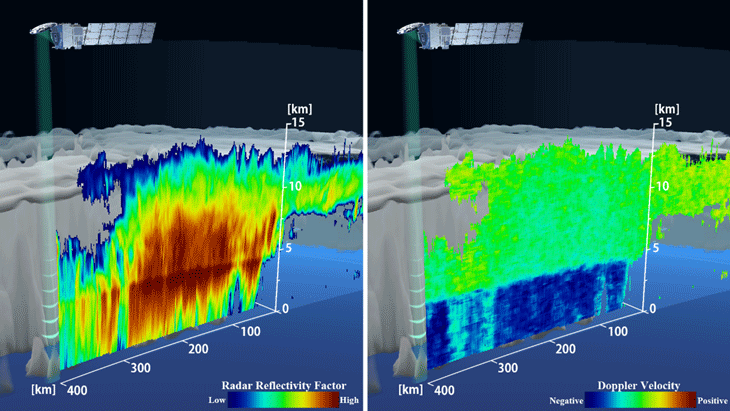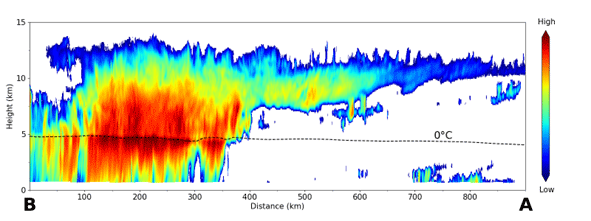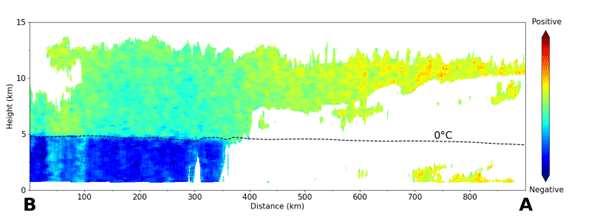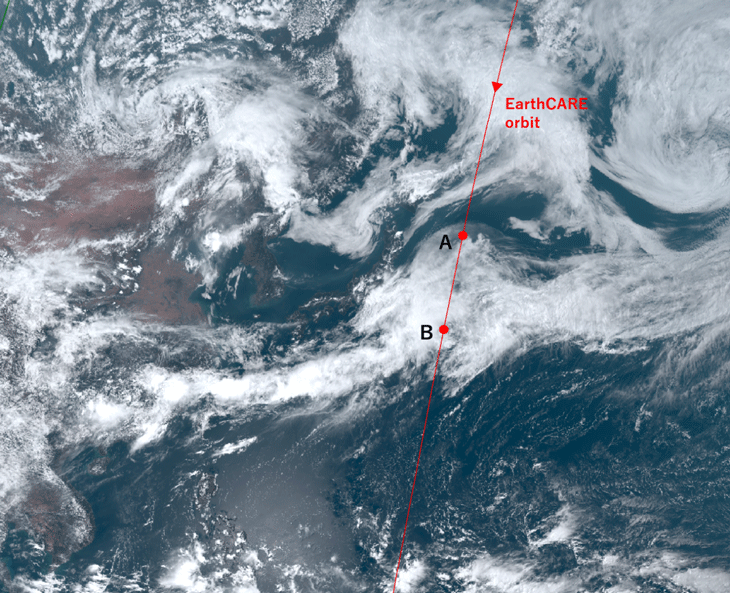The Japan Aerospace Exploration Agency (JAXA, President: Hiroshi Yamakawa) and the National Institute of Information and Communications Technology (NICT, President: Hideyuki Tokuda) have released the first images from the Cloud Profiling Radar (CPR) on board Earth Cloud Aerosol and Radiation Explorer (EarthCARE) (Japanese nickname: Hakuryu), which was jointly developed with the European Space Agency (ESA), and launched at 7:20 a.m. (JST) on May 29, 2024. The CPR is the world’s first spaceborne Doppler radar in the W-band (94 GHz) and was jointly developed by JAXA and NICT. The commissioning phase of the CPR is currently underway and the first observations were conducted on June 12 and 13. The CPR observed the cloud area in a stationary front, called the Baiu front, over the ocean at east of Japan, measured the internal structure of cloud, and succeeded in the world's first measurement of vertical cloud motion from space. The images below are a visualization of the measured data obtained by radar observation as a cloud cross section.
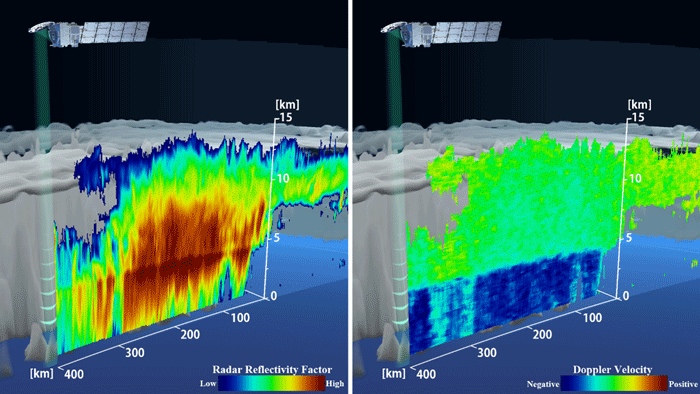
Three-dimensional diagram showing the vertical distribution of the radar reflectivity factor (left) and Doppler velocity (right) by the CPR. The horizontal distribution of clouds is calculated using data from the geostationary meteorological satellite, Himawari-9. Himawari-9 data was provided by the Japan Meteorological Agency. Image credit: JAXA/NICT/ESA.
You can see the video of the CPR first images here.
At around 13:36 on June 13, 2024 (Japan Standard Time), the CPR observed a cloud area in the Baiu front over the ocean at east of Japan. The CPR measured the cloud distribution reaching an altitude of approx. 13 km, and found the characteristic that the Doppler velocity increases downward at altitudes below approx. 5 km. This can be considered to indicate the high falling speed of the raindrops. Conventionally, these data can be obtained only by ground radar or airborne radar with limited observation areas, but the CPR onboard the EarthCARE satellite enables uniform observation of the entire earth.
It is expected that the CPR's observations of various cloud regions, including the Baiu front, will contribute to elucidating the mechanism by which cloud droplets grow into precipitation. In addition, the effect of clouds on the climate system is greatly influenced by factors such as cloud height, overlapping patterns, and cloud type. Therefore, using the CPR to measure vertical distributions of clouds, including their vertical motions on a global scale, will contribute to elucidating effects of clouds on the climate system.
JAXA and NICT will continue to conduct the commissioning phase of the CPR (for about six months) and then move to the mission operation phase. Data will be made available on the JAXA G-Portal and the European Space Agency (ESA) website. ESA is currently conducting the initial functional verification of the ESA’s three sensors on the EarthCARE satellite. We plan to announce the first images that combines the CPR and ESA sensors at a later date.
Role of each organization
- Japan Aerospace Exploration Agency (JAXA): Development of CPR system, development and operation of data processing system and data dissemination system.
- National Institute of Information and Communications Technology (NICT): CPR performance evaluation, CPR data processing algorithm development.
- European Space Agency (ESA): Development of three sensors onboard the satellite, development and operation of satellite systems and data processing systems, and data dissemination system.
